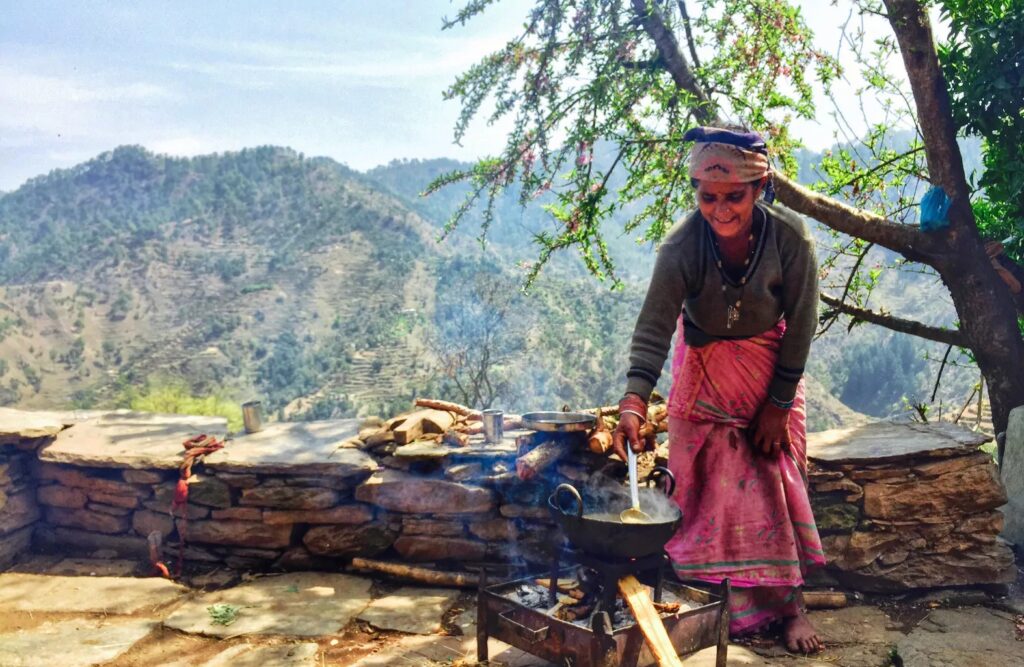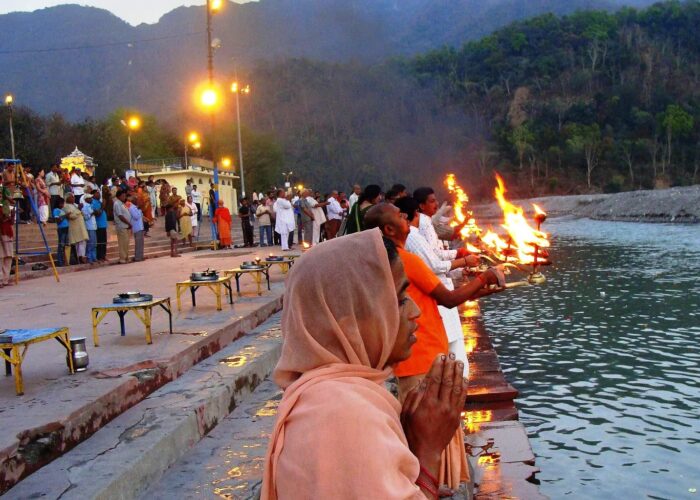A trip along the Ganges opens the doors to the mysticism of this fascinating India, both rooted in its traditions and turned towards modernity. It follows the course of the sacred river, the one which washes away all sins and allows us to escape the cycle of rebirth.
The empires and kingdoms that succeeded one another, but also the great religions (Hinduism, Sikhism, Jainism, Sufism, Buddhism) present today in stone and in rituals, are an integral part of the discoveries of a trip to northern India.
During a trip to the Ganges Valley, travelers share with pilgrims and sadhus the most sacred rites, which are the foundation of one of the oldest civilizations in the world.

Ganga Valley Tour
A trip to the Ganges Valley begins in Delhi, the capital of India. Rich in its Mughal and colonial past, all the major religions of India are represented there: Hinduism, Sikhism, Jainism, Islam, Buddhism, Christianity… Perfect for a good introduction to this journey around Indian spirituality.
Like Delhi, Agra is located on the banks of the Yamuna, a tributary of the Ganges. It reached its peak during the reign of the Mughal emperors Akbar the Great, Jahangir and Shah Jahan, who evolved its architecture. Agra’s most iconic sites are the Red Fort, which houses a succession of refined palaces and delicate pavilions behind its massive walls, and the majestic Taj Mahal, a marvelous white marble mausoleum erected by Shah Jahan for his wife Mumtaz.
Near Agra, Fatehpur Sikri was the short-lived capital of Emperor Akbar in the 16th century, which he abandoned 15 years later for lack of water. It houses palaces with diverse religious inspirations, Muslim, Hindu, Jain and Christian. You can also discover the tomb of the Sufi holy man, Sheikh Salim Chishti, an extraordinary masterpiece of finely carved mashrabiya.

Even though it is not located in the Ganges Valley, Amritsar is an important stopover for those interested in the great religions. Located northwest of Delhi and founded in 1577 by the fourth Sikh Guru, it is home to the holy site of Sikhism, the spectacular Golden Temple, one of the most serene and exhilarating sites in India. The same cannot be said of the bustling streets surrounding the temple. Delighted Journey recommends visiting the temple in the early morning or at sunset, when the light caresses its golden domes, which are reflected in the waters of the sacred pool.
It is one of the gateways to the Himalayan hills of northwest India and Dharamshala, the capital of Tibetans in exile.
Further north are the holy cities of Rishikesh and Haridwar, close to the sources of the Ganges, where pilgrims flock to pay homage to the gods and immerse themselves in the saving waters of the sacred river… At the foot of the Himalayan hills, Haridwar is a center a very lively pilgrimage site, where every 12 years the religious festival Kumbha Mela is organized. Every evening, hundreds of pilgrims gather for the Ganga Arti ceremony, to the sound of bells and hymns chanted for millennia.
In the foothills of the Himalayas, Rishikesh is another sacred city, home to numerous ashrams, including that of Maharishi Mahesh Yogi, where the Beatles stayed. It is the world capital of yoga and meditation, but also the starting point for many rafting routes and hikes in the Himalayan hills. Suspended above the sacred river, the narrow, winding streets of the old city are lined with houses clinging to the hillsides and temples that light up at nightfall, while prayers are raised to the gods .

In the heart of the valley, the renowned city of Lucknow tells travelers the legends and splendor of the last Nababs of the kingdom of Aoudh. Poetry, delicate cuisine, extreme refinement are perfectly described in the film The Chess Players by Satyajit Ray.
In the heart of the Ganges valley, Varanasi (Benares) cannot leave anyone indifferent. The religious passion that derived from its Ghats makes it the symbol of deliverance for pilgrims who come to meditate on the banks of the sacred river, gift of Lord Shiva. It is the holy city of all for Hindus, who come to cremate their dead there, but also deliver their offerings of flowers, light and incense to the liberating river. Intense and moving, a stay in Benares opens the doors to mysticism. Near Varanasi (Benares), it is in Sarnath, a center of Buddhism, that you can follow the steps of Siddhartha Gautama, the Buddha (the awakened one).
A short flight takes you to the beautiful temples of Khajuraho, located in Madhya Pradesh.

How to travel in the Ganges Valley?
The exploration of the Ganges Valley begins with the arrival of the plane at the Delhi airport. The trip is then organized in the form of an itinerary by road and possibly by train or plane, with different stages allowing access to the sites of the region. At least 10 to 12 nights are required for a proper exploration of the Ganges Valley.
Delighted Journey recommends that you continue your journey to Dharamshala, Almora or Manali through the Himalayan hills to discover lesser-known temples, valleys and villages.

When to Travel to The Ganges Valley (Source of Ganges)?
The best time to discover the Ganges Valley is from mid-October to mid-April. Temperatures can be very low (between 0 and 5 degrees at night) in December and January in northern India. In July and August, strong heat (sometimes over 35°) and risk of sporadic heavy rain.
Highlights by our Guests.
- An introduction to the great religions of India.
- The eternal beauty of the Taj Mahal mausoleum in Agra.
- The fervor at the tomb of the Sufi holy man of Fatehpur Sikri.
- The deep devotion of Hindu pilgrims from Benares and Rishikesh.
- The marvelous Golden Temple of Amritsar, the holiest of places for Sikhs.
- The beauty of the Himalayan hills covered with beautiful forests.

